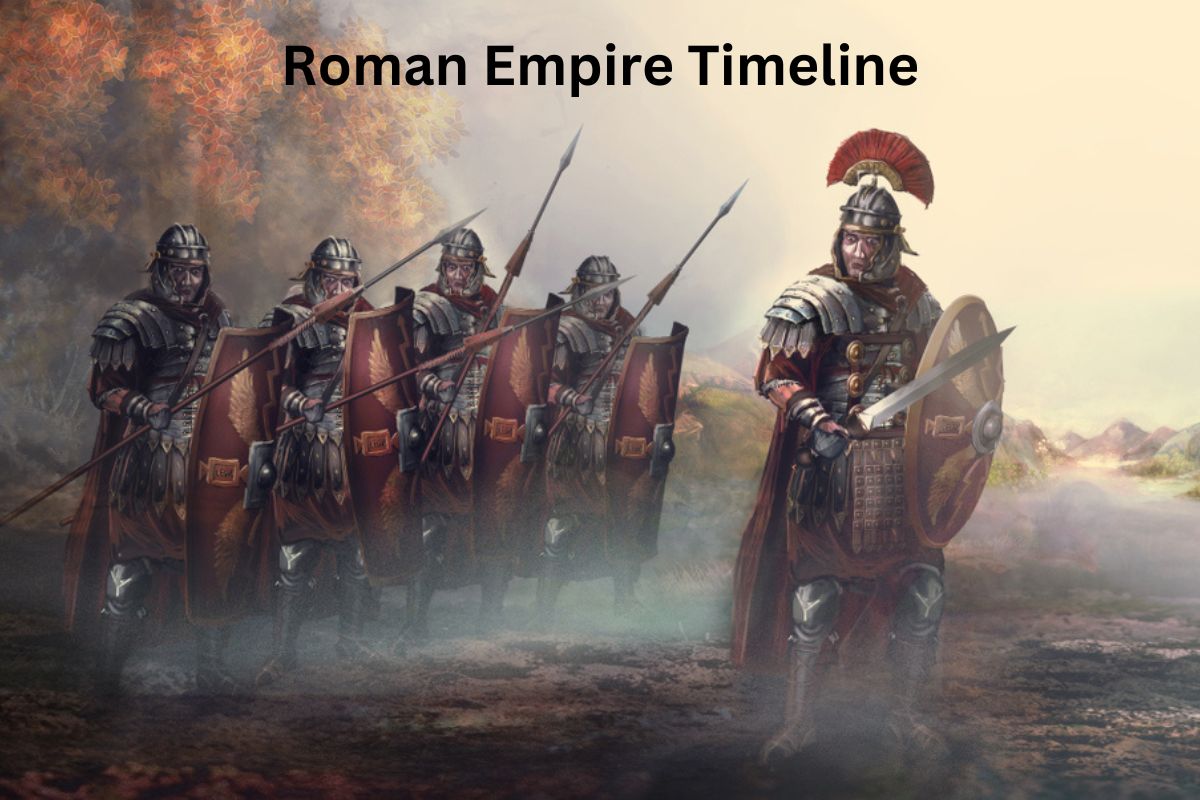The Roman Empire, considered one of the greatest civilizations in history, was a vast, powerful, and culturally rich entity that dominated the Mediterranean region and beyond for hundreds of years.
Its official start is traditionally dated to 27 BC when Gaius Octavius, also known as Octavian, became the first Roman Emperor and took the name Augustus. This marked the end of the Roman Republic and the beginning of the Roman Empire.
At its peak, the Roman Empire included lands in Europe, Africa, and Asia, stretching from the British Isles to the Near East and from the Rhine and Danube rivers to North Africa.
The empire was known for its mighty military, extensive infrastructure (including roads, aqueducts, and buildings), and enduring cultural contributions in law, language, architecture, and government.
The Roman Empire was divided into a Western and an Eastern Empire in 395 AD. The Western Roman Empire fell in 476 AD when the last Western Roman Emperor, Romulus Augustus, was deposed.
Also Read: Roman Emperors in Order
The Eastern Roman Empire, known as the Byzantine Empire, survived for another thousand years until 1453 AD when it fell to the Ottoman Turks.
The influence of the Roman Empire continues to be felt today in numerous aspects of Western culture and society, including government, law, architecture, language, and engineering. It also played a significant role in the spread of Christianity.
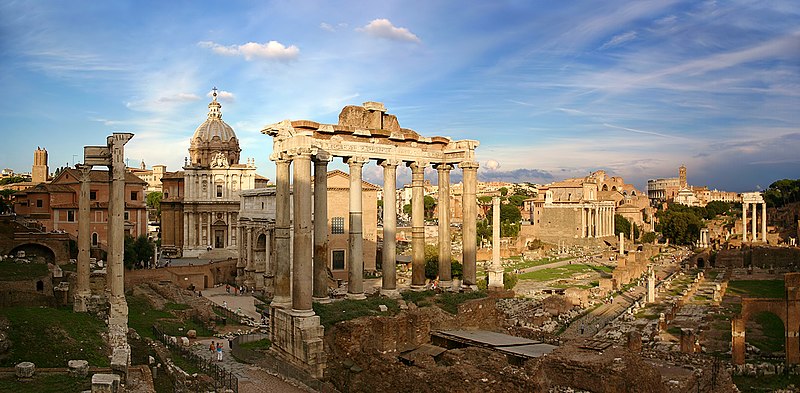
| Period / Event | Date Range | Brief Description |
|---|---|---|
| Founding of Rome | 753 BC | Rome was founded, according to legend, by the twin brothers Romulus and Remus. |
| Roman Kingdom | 753 BC – 509 BC | The earliest period of Roman history is characterized by monarchial rule, including legendary figures like King Romulus. |
| Roman Republic | 509 BC – 27 BC | The Republic was established in 509 BC, following the overthrow of the last Roman king, Tarquin the Proud. This period was characterized by a mixed constitution of democratic and oligarchic elements. |
| Julius Caesar named ‘dictator in perpetuity’ | 44 BC | After a series of civil wars, Julius Caesar emerged as the most powerful man in Rome, declaring himself “dictator in perpetuity.” He was assassinated by conspirators a month later. |
| Octavian becomes Augustus | 27 BC | After more civil wars, Julius Caesar’s adopted son, Octavian, becomes the first Roman Emperor, taking the name Augustus. This marks the end of the Roman Republic and the start of the Roman Empire. |
| Pax Romana | 27 BC – 180 AD | The Roman Empire experiences a period of relative peace and stability known as the Pax Romana, or “Roman Peace”. |
| Emperor Constantine and Christianity | 312 AD | The Emperor Constantine converts to Christianity and issues the Edict of Milan in 313 AD, granting religious tolerance throughout the empire. This marks the beginning of Christianity’s rise as the dominant religion of the Roman Empire. |
| Division of the Empire | 395 AD | The Roman Empire is formally divided into Eastern and Western halves, each with its own emperor. The Western Roman Empire continues to decline, while the Eastern Empire, also known as the Byzantine Empire, continues for another thousand years. |
| Sack of Rome by the Visigoths | 410 AD | The Visigoths, a Germanic tribe, sack Rome in 410 AD. This marks a significant blow to the prestige and power of the Western Roman Empire. |
| Fall of the Western Roman Empire | 476 AD | The Western Roman Empire officially falls when the last emperor, Romulus Augustus, is deposed by the Germanic king Odoacer. This is traditionally seen as the end of the ancient world and the beginning of the Middle Ages in Europe. |
| Fall of the Eastern Roman Empire/Byzantine Empire | 1453 AD | The Eastern Roman Empire, also known as the Byzantine Empire, falls when Constantinople is captured by the Ottoman Turks. This marks the final end of the Roman Empire. |
Timeline of the Roman Empire
Founding of Rome (753 BC)
According to legend, Rome was founded in 753 BC by twin brothers Romulus and Remus, who were raised by a she-wolf.
The brothers eventually fought over who would rule the new city, with Romulus killing Remus and becoming the first king of Rome. This is just a legend, however.
Also Read: Timeline of the Fall of the Roman Empire
In reality, Rome was likely founded by Latin and Sabine people living in the area. The city gradually grew in power and influence, absorbing neighboring communities.
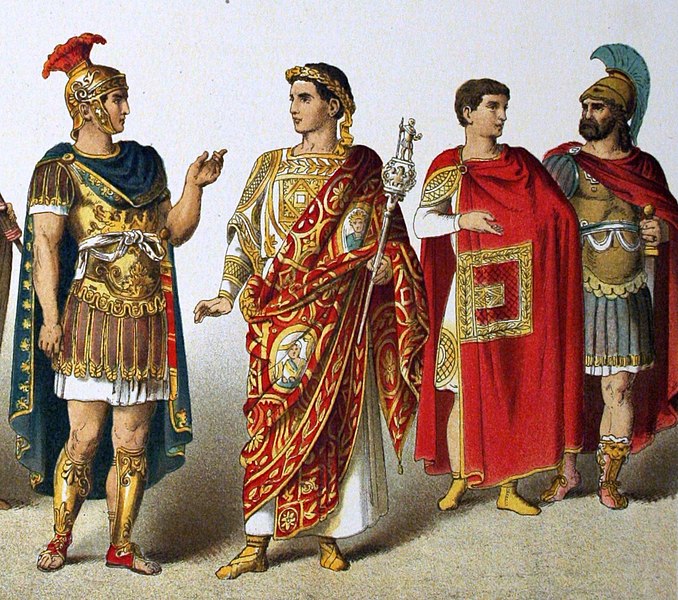
Roman Kingdom (753 BC – 509 BC)
During the period of the Roman Kingdom, Rome was governed by seven successive kings, starting with Romulus. These kings were not hereditary monarchs, but were elected for life by the comitia curiata, an assembly of Roman citizens.
The Roman Kingdom saw important developments in the organization of the city and its institutions.
Also Read: World Empires Timeline
The last king, Lucius Tarquinius Superbus (Tarquin the Proud), was a tyrannical figure who was overthrown in 509 BC after his son Sextus Tarquinius raped Lucretia, a noblewoman. This event led to a revolt, and the establishment of the Roman Republic.
Roman Republic (509 BC – 27 BC)
The Roman Republic was characterized by a mixed constitution of democratic and oligarchic elements. It was governed by a Senate and annual magistrates known as consuls.
During this period, Rome expanded its influence, gradually conquering the entire Italian peninsula and then expanding into North Africa, Spain, and Greece.
The Republic was marked by social conflicts, notably the Conflict of the Orders between Patricians (nobility) and Plebeians (commoners). Later, it was destabilized by a series of civil wars and political conflicts, including those involving Julius Caesar, Pompey, and Marc Antony.
These struggles culminated in the ascendancy of Octavian, Julius Caesar’s adopted son, who became the first Roman Emperor and took the name Augustus, marking the end of the Roman Republic and the beginning of the Roman Empire.
Julius Caesar named ‘dictator in perpetuity’ (44 BC)
Julius Caesar was a military general and statesman who played a critical role in the rise of the Roman Empire. He formed the First Triumvirate with Pompey and Crassus, an unofficial political alliance that dominated Roman politics.
After Crassus’ death and a falling out with Pompey, Caesar plunged Rome into civil war. He emerged victorious in 45 BC and declared himself “dictator in perpetuity.” His reforms included calendar reform (leading to the Julian calendar) and centralization of the bureaucracy.
However, his accumulation of power alarmed many senators, who assassinated him on the Ides of March (March 15), 44 BC, hoping to restore the Republic.
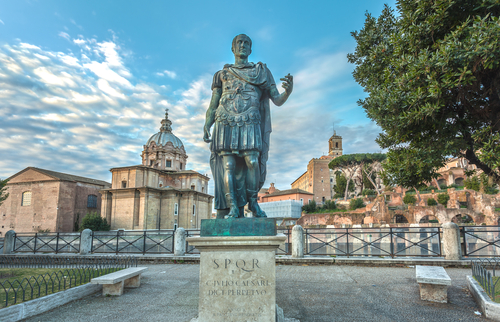
Octavian becomes Augustus (27 BC)
Following Caesar’s assassination, Rome was plunged into a period of civil war and political turmoil. Octavian, Julius Caesar’s adopted heir, eventually emerged as the victor. He formed the Second Triumvirate with Mark Antony and Lepidus, but this alliance also fell apart.
Octavian defeated Antony and his ally, Queen Cleopatra of Egypt, at the Battle of Actium in 31 BC. In 27 BC, Octavian effectively became the first Roman Emperor, taking the name Augustus.
He cleverly maintained the illusion of republican rule while holding onto ultimate power. His reign ushered in a period of peace and prosperity known as the Pax Romana.
Pax Romana (27 BC – 180 AD)
The Pax Romana, or “Roman Peace,” was a period of relative stability and prosperity throughout the Mediterranean world. It started with Augustus and generally ended with the death of Marcus Aurelius.
During this period, the Roman Empire reached its greatest territorial extent, and its culture and economy flourished. Roman law, architecture, literature, and language left an indelible mark on the Western world.
However, the Pax Romana wasn’t devoid of conflicts, as there were significant disturbances, like the Jewish-Roman wars. Despite its name, the Roman Peace was maintained by continuous military readiness and occasional wars.
Emperor Constantine and Christianity (312 AD)
Constantine the Great was one of the most influential emperors in Roman history. He ruled from 306 AD until his death in 337 AD.
In 312 AD, before the Battle of the Milvian Bridge, Constantine reportedly had a vision of the Christian cross and attributed his subsequent victory to the Christian God.
Following this, he enacted the Edict of Milan in 313 AD, which granted religious freedom throughout the empire and allowed Christians to worship openly without fear of persecution.
He also convened the First Council of Nicaicaea in 325 AD to resolve the issue of Arianism, a theological dispute within the Christian Church. He eventually moved the capital of the empire from Rome to Byzantium, which was renamed Constantinople (modern-day Istanbul) in his honor.
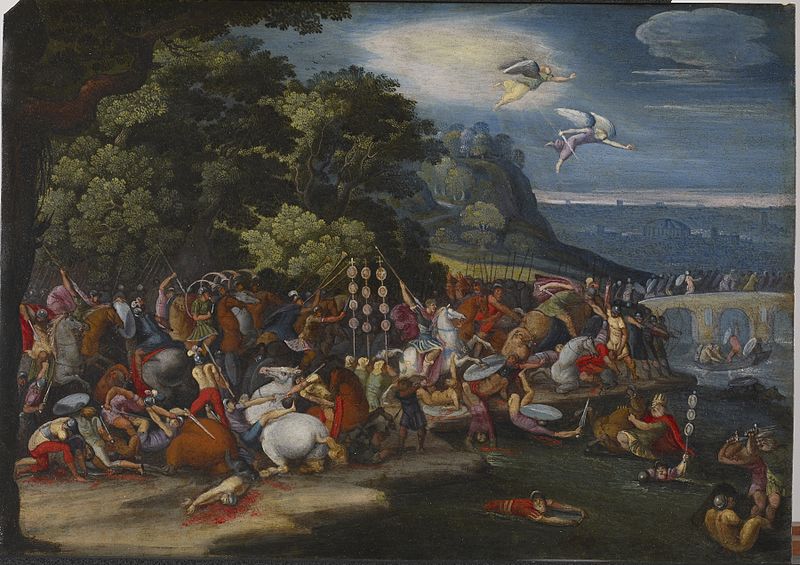
Division of the Empire (395 AD)
The Roman Empire was formally divided into Eastern and Western halves in 395 AD, following the death of Emperor Theodosius I, the last emperor to rule over both the eastern and western halves of the empire.
His sons Arcadius and Honorius inherited the Eastern and Western Roman Empires, respectively. The Western Roman Empire continued to decline due to a combination of internal instability and external pressure from Germanic tribes.
On the other hand, the Eastern Empire, also known as the Byzantine Empire, preserved much of the Roman legal and cultural traditions, and would continue to exist for over a thousand more years.
Sack of Rome by the Visigoths (410 AD)
The Visigoths were a Germanic tribe who had initially been allies of the Roman Empire but later turned against it.
Led by King Alaric I, the Visigoths laid siege to Rome and eventually sacked the city in 410 AD. While the Roman Empire had been in decline for some time, the sack of its capital city marked a significant blow to its prestige and power.
It was the first time in almost 800 years that Rome had fallen to an enemy. This event marked a significant milestone in the decline of the Western Roman Empire.
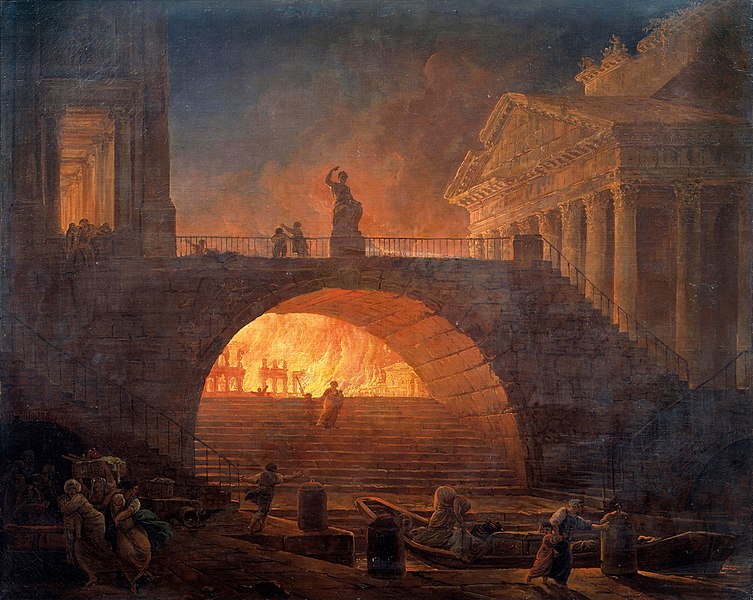
Fall of the Western Roman Empire (476 AD)
Over the 5th century, the Western Roman Empire suffered from continuous invasions, economic decline, and internal corruption and instability. Its power waned, and by 476 AD, the end came when the last emperor, a young boy named Romulus Augustus, was deposed by the Germanic king Odoacer.
Odoacer declared himself King of Italy and did not bother appointing a new emperor, marking the end of the Western Roman Empire.
This date is traditionally used to mark the end of the ancient world and the beginning of the Middle Ages in Europe.
It’s worth noting that the people at the time did not recognize this as the “fall” of Rome, as the institutions of the Roman Empire, including language, culture, law, and administration, continued to exist in altered forms for many centuries.
Fall of the Eastern Roman Empire/Byzantine Empire (1453 AD)
The Eastern Roman Empire, known historically as the Byzantine Empire, managed to survive the fall of the West and continued to exist for more than a thousand years. This empire preserved much of Roman law, culture, and knowledge that was lost in the West during the Middle Ages.
Its capital, Constantinople, was a major hub of trade and culture. However, the Byzantine Empire also faced continuous pressure from enemies, including Persians, Arabs, Seljuk Turks, and Crusaders from the West.
Finally, in 1453 AD, the capital city of Constantinople was captured by the Ottoman Turks under Sultan Mehmed II, marking the final end of the Roman Empire. The city was renamed Istanbul and became the capital of the Ottoman Empire. The fall of the Byzantine Empire marked the end of the Middle Ages and the beginning of the Renaissance in Europe.
